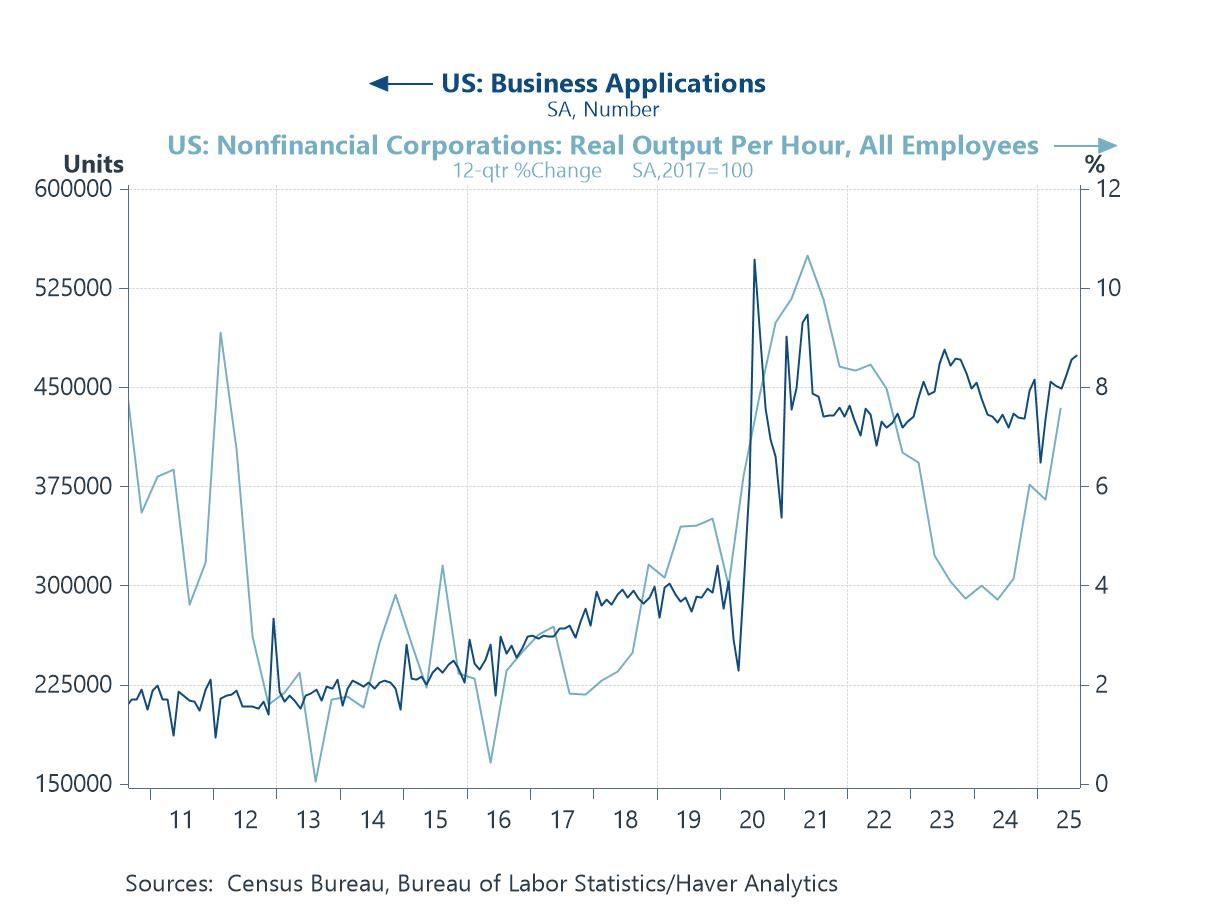U.S. Initial Unemployment Insurance Claims Ease Further
by:Tom Moeller
|in:Economy in Brief
Summary
- First-time claims fall to lowest since the end of May.
- Continued weeks claimed rise to five-month high.
- Insured unemployment rate holds near record low.


In the week ending September 3, initial claims for unemployment insurance declined to 222,000 (-38.5% y/y) from 228,00 during the previous week, revised from 232,000. The number for the August 20 week was revised to 237,000 from 243,000. The Action Economics Forecast Survey expected 237,000 initial claims for last week. The 4-week moving average of initial claims fell to 233,000 last week from 240,000 in the prior week, revised from 241,500.
In the week ended August 27, continued weeks claimed for unemployment insurance rose to 1.473 million (46.2% y/y) from 1.437 million in the prior week, revised from 1.438 million. The second week of December was unrevised at 1.412 million weeks.
The insured unemployment rate remained at 1% for the eigth consecutive week. The insured unemployment rate has been fluctuating between 0.9% and 1.0% since April, a record-low range for the series which dates back to 1971.
In the week ended August 20, the total number of continued weeks claimed in all unemployment insurance programs was 1.415 million (-88.1% y/y). A 36-year low of 1.282 million were claimed in the last week of May. This total includes federal employees, newly discharged veterans, extended benefits and other specialized programs and is not seasonally adjusted. Claims in the Pandemic Unemployment Assistance program and Pandemic Emergency Unemployment Compensation are no longer included in the main Labor Department press release, as both programs have expired.
The insured rates of unemployment in regular programs vary widely across states. The highest insured unemployment rates in the week ending August 20 were in New Jersey (2.21%), California (1.87%), Rhode Island (1.78%), Puerto Rico (1.70%), Connecticut (1.67%), and New York (1.66%). The lowest rates were in South Dakota (0.16%), Alabama (0.24%), Kansas (0.29%), Nebraska (0.30%), and Virginia (0.37%). Other state insured rates of unemployment in regular programs include Pennsylvania (1.32%), Illinois (1.12%), Texas (0.84%) and Florida (0.46%). These state rates are not seasonally adjusted.
Data on weekly unemployment claims going back to 1967 are contained in Haver's WEEKLY database, and they are summarized monthly in USECON. Data for individual states are in REGIONW. The expectations figure is from the Action Economics Forecast Survey, carried in the AS1REPNA database.
Wage Growth When Inflation Is High from the Federal Reserve Bank of San Francisco can be found here.


Tom Moeller
AuthorMore in Author Profile »Prior to joining Haver Analytics in 2000, Mr. Moeller worked as the Economist at Chancellor Capital Management from 1985 to 1999. There, he developed comprehensive economic forecasts and interpreted economic data for equity and fixed income portfolio managers. Also at Chancellor, Mr. Moeller worked as an equity analyst and was responsible for researching and rating companies in the economically sensitive automobile and housing industries for investment in Chancellor’s equity portfolio. Prior to joining Chancellor, Mr. Moeller was an Economist at Citibank from 1979 to 1984. He also analyzed pricing behavior in the metals industry for the Council on Wage and Price Stability in Washington, D.C. In 1999, Mr. Moeller received the award for most accurate forecast from the Forecasters' Club of New York. From 1990 to 1992 he was President of the New York Association for Business Economists. Mr. Moeller earned an M.B.A. in Finance from Fordham University, where he graduated in 1987. He holds a Bachelor of Arts in Economics from George Washington University.




 Global
Global

